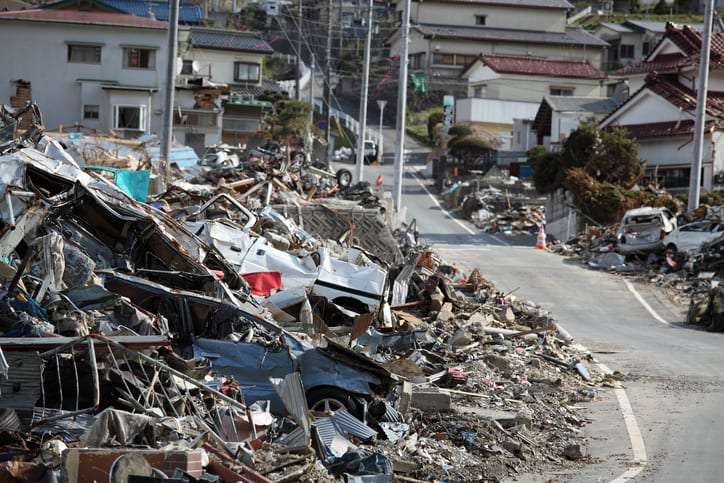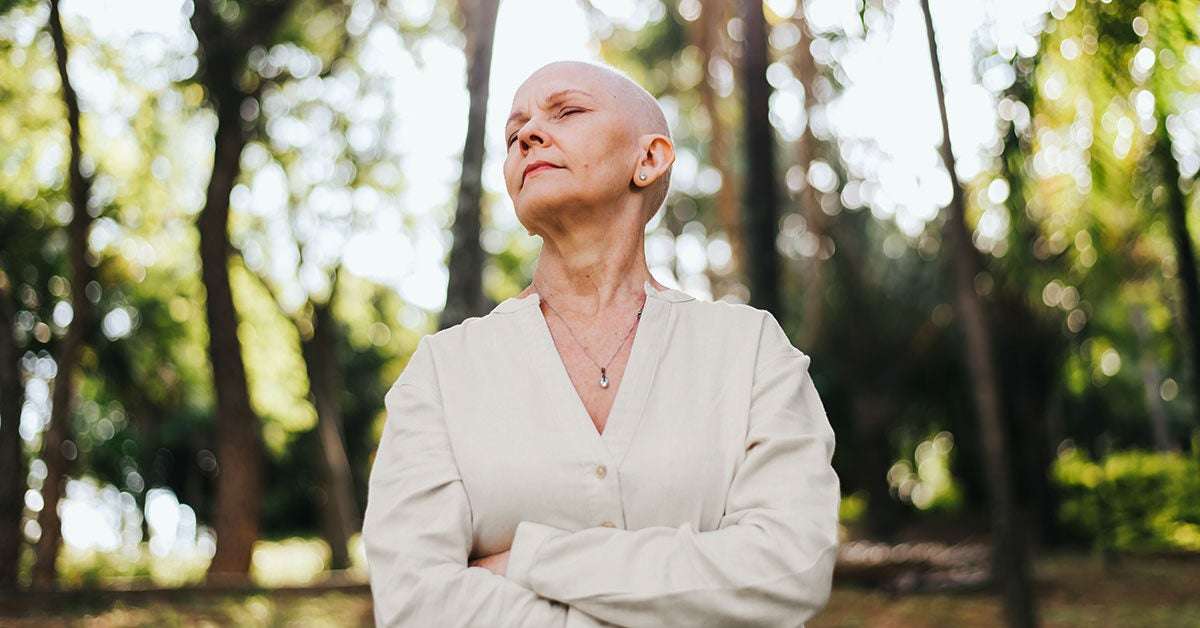Article Provided By: Megan Ross, PhD candidate, LPC, R-DMT, GL-CMA – Trauma Therapy Coordinator at Timberline Knolls Residential Treatment Center
An eating disorder is rarely the result of one factor. However, it is not unusual for physical or psychological trauma to be involved.
The definition of trauma or what constitutes a traumatic experience is vast. Trauma can result from something as seemingly minor as childhood bullying or an experience as catastrophic as violent rape.
Trauma is the emotional and physiological aftermath of an event; it is not the event itself, it is the individual’s experience of the event. For example, imagine two young women witnessing a terrible accident in which a person is killed. Later that day, one of these women meets a friend for coffee and tells her all about the horrific accident; she then goes on with her life. Although she was impacted, this woman was not traumatized by the event. The second woman’s experience is radically different. Due to myriad factors such as past experiences or a predisposition toward depression, she suffers extreme trauma. In time, her inability to cope with painful thoughts and emotions could manifest in a multitude of psychiatric issues including a food-related disorder.
Somatic Experiencing and Eating Disorders
When trauma is at the heart of an eating disorder, somatic experiencing (SE) often proves a valuable therapeutic tool. SE Is based on the notion that trauma is a physiological, not psychological condition; therefore, the body must be included in therapy.
When a woman or girl experiences trauma, survival energy not unlike what is seen in the wild, becomes trapped inside her body. SE strives to discharge, and therefore, neutralize this negative tension. As the therapy progresses, pent-up physical energy is often released in the form of trembling, sweating, crying, and even yawning.
In turn, physiological changes take place, in the form of new neuro pathways being created in the brain. It is these neuro pathways that ultimately lead to changed behavior.
Just as many factors contribute to the development of an eating disorder, many therapeutic strategies, such as SE, can contribute in a very positive fashion to its eradication.
 Trauma is the emotional and physiological aftermath of an event; it is not the event itself, it is the individual’s experience of the event. Different individuals are impacted differently by the same traumatic event. This has to do with emotional intelligence, imprinting, past traumatic experiences, brain chemistry (genetics) and coping mechanisms. Surviving natural disasters such hurricanes and earthquakes, witnessing a murder, being involved in a motor vehicle accident, fighting on the font lines in a war or working as a first responder are all examples of traumatic experiences however not every survivor, veteran or first responder has flashbacks, nightmares, anxiety or depression that is associated with past traumas. Unhealthy childhood experiences in the home or at school are also associated with trauma. A simple working definition of trauma is: anything that is too much, too soon, or too fast for our nervous system to handle, especially if we can’t reach a successful resolution. The inability to cope with painful thoughts and emotions could manifest in a multitude of psychiatric issues including depression, anxiety, substance abuse or an eating disorder.
Trauma is the emotional and physiological aftermath of an event; it is not the event itself, it is the individual’s experience of the event. Different individuals are impacted differently by the same traumatic event. This has to do with emotional intelligence, imprinting, past traumatic experiences, brain chemistry (genetics) and coping mechanisms. Surviving natural disasters such hurricanes and earthquakes, witnessing a murder, being involved in a motor vehicle accident, fighting on the font lines in a war or working as a first responder are all examples of traumatic experiences however not every survivor, veteran or first responder has flashbacks, nightmares, anxiety or depression that is associated with past traumas. Unhealthy childhood experiences in the home or at school are also associated with trauma. A simple working definition of trauma is: anything that is too much, too soon, or too fast for our nervous system to handle, especially if we can’t reach a successful resolution. The inability to cope with painful thoughts and emotions could manifest in a multitude of psychiatric issues including depression, anxiety, substance abuse or an eating disorder.
How traumatic events are processed
As a traumatic or distressing event occurs, it may overwhelm normal coping mechanisms and as a result the memory and associated stimuli are inadequately processed and stored in an isolated memory network. It is almost as the brain is re-wired to focus only on the traumatic event and it’s associated emotions as if the event was constantly on repeat in the brain. When this occurs, these memories will have lasting effects and will be repeated over and over as if the individual is re-experiencing the trauma for the first time because the sounds, smells, images and feelings were not adequately processed and stored.
What is somatic experiencing (SE)?
Peter A. Levine PhD. founded somatic experiencing, which is based on the many different disciplines associated with the physiology of stress and trauma. Dr. Levine was curious about the fact that animals in the wild aren’t traumatized by their life-and-death existence, while people can be traumatized by events that seem inconsequential to others. Somatic experiencing focuses on the physiological responses that occur when someone experiences or remembers an overwhelming or traumatic event, in his or her body, rather than only through the thoughts or emotions connected to it. In other words, human emotions can turn into physical symptoms such as rapid breathing, sweating, trembling hands or muscle aches. “The somatic experiencing approach facilitates the completion of self-protective motor responses and the release of thwarted survival energy bound in the body, thus addressing the root cause of trauma symptoms”.
Somatic Experiencing sessions involve the introduction of small amounts of traumatic material and the observation of an individual’s physical responses to that material, such as shallow breathing or a shift in posture. The therapist will frequently check in with the individual to assess and record physical sensations that may be unnoticeable to the therapist, such as feelings of heaviness, tightness, muscle pain or dizziness. The therapist is extremely careful not to re-traumatize the individual therefore this therapy strategy can have a slow onset and duration. The therapist will help the individual find places of safety, whether that be a place in the body that is not activated by the trauma, or a physical place to retreat to in one’s mind. Experiencing the sensations related to the traumatic event in a safe way allows a person to fully process the trauma, become more aware of their physical responses to stress and release the negative survival energy in the body and replace it with positive thoughts and affirmations.
Trauma and eating disorders
When the impact of trauma on an individual is fully understood, it comes as no surprise that an eating disorder may be utilized as a coping strategy. Fortunately, with complete and comprehensive treatment, lifelong healing can be achieved.
We’re Here for You
If you are struggling or someone you know is struggling, we are here for you. Center for Discovery’s Treatment Centers specialize in treatment for eating disorders, mental health and dual diagnosis treatment with unique treatment programs for every individual to get them on their way to eating disorder recovery.
For more information, resources, or to consult with one of our specialists, call 855.433.9798.
Eating disorders (EDs) may be among the most self-destructive and persistent behaviors that emerge in the aftermath of trauma. Researchers are becoming curious about the role of the body, and, in particular, the nervous system, as it relates to ED symptoms and the management of dysregulated affect states. This chapter highlights the psychobiological processes that somatic experiencing (SE) is built upon with regard to working with trauma, with specific considerations for its application when working with the ED population. A natural starting point for understanding the intersection between trauma and EDs involves a brief overview of the effects of trauma on the nervous system. SE treatment goals are accomplished not only by listening to the client’s narrative but also by closely watching the body’s expression of the nervous system to slow the process down and explore the various elements of an experience.
Guest blogger for NC Center for Resiliency, PLLC
Written by Paula Scatoloni, LCSW, CEDS, SEPGuest blogger for NC Center for Resiliency, PLLC
One of the first things I tell my clients is, “eating disorders are about food and they are not about food.” This usually gets their attention. Next, I explain that eating disorder behaviors inform us about two things: First, our relationship to ourselves (our capacity to self-regulate), and second, the behaviors inform us about our relationship with people (our capacity to co-regulate). Today, thanks to emerging research from pioneers such as Dr. Stephen Porges and Dr. Allan Schore we know that self-regulation and co-regulation are inextricably linked. Schore’s Regulation Theory and Porges Polyvagal Theory both demonstrate that infants come into this world with a limited capacity to regulate their nervous systems, emotions, sleep, etc. and it is primarily through the dyadic interaction with caregivers that the neural platform for co-regulation and, later, self-regulation are put into place.
Food (suckling) is one of the first ways that humans learn to regulate as infants. The act of eating uses the same neural platform as the social engagement system – our neurobiological system that supports the ability to bond and seek out relationships for support (Porges, 2012). The field of eating disorders has mainly referred to behaviors such as binge eating, exercise, or purging as “compensatory” behaviors, or attempts to regulate emotions when other methods fail. But a more nuanced view of the disorders invites us to move away from focusing on symptom reduction to consider the ways that the symptoms reflect the relational struggle that most individuals with eating disorders encounter. These interpersonal difficulties are often concurrent and precede the development of the diagnosis (i.e. difficulty reaching out for support, taking in needs, and digesting relational connection).
Similarly, the field of trauma is providing a new paradigm for us to understand eating disorder behavior through the defensive systems. The defensive system involves our biological impulse to protect and defend through fight, flight, or freeze. Individuals with disordered eating can be “stuck” in their defensive systems due to an early trauma or pervasive trauma that is reflected in the eating disorder behavior. Consider the following: individuals who experience stuck flight energy will present with anxiety, panic, obsessive thoughts, food rituals, binge eating, or excessive exercise. Individuals struggling to express fight energy manifests it through purging, chewing and spitting, anger turned on the body, and self-harm behaviors. The freeze response involves a sense of disembodiment (dissociation, numbing), inability to track fullness or hunger, inability to engage in relationships, and depressed mood. Often individuals who struggle with disordered eating manifest all of the above, shifting from one nervous system state to the other on any given day.
Understanding eating disorders through the attachment and defensive systems involves a paradigm shift away from traditional cognitive models of treatment that are designed to intervene at the level of the prefrontal cortex (the thinking brain). This part of the brain is usually “offline” when a person is experiencing high states of emotional arousal or shutdown. Current body-oriented models of treatment that incorporate the body, the very place where the war is being waged are the missing link to treating this pervasive, and at times, life-threatening disorder. Incorporating the body through modalities such as Somatic Experiencing™, Sensorimotor Psychotherapy™ and related methods provides pre-cortical interventions to support areas of the brain that are responsible for attachment and basic nervous system regulation. A somatic-based approach to eating disorder treatment recognizes the connection between eating, attachment, and trauma and works to cultivate the biological and relational structures that support the ability to regulate emotions, connect with other humans, and ultimately thrive in the world.
At the NC Center for Resiliency, all of our clinicians are trained to work with
psychobiological methods. Whether working with eating disorders, trauma, or mood disorders we are committed to helping clients move toward coherence through the vehicle of their own bodies and nervous systems.
Paula Scatoloni, LCSW, CEDS, SEP is a Somatic Experiencing™ Practitioner, an eating disorder specialist, and the creator of EASE™ (Eating, Attachment, and Somatic Education), a professional workshop for health and mental health practitioners. She is also the co-founder of Embodied Recovery, a professional training program in Durham NC. The training program offers courses on the Embodied Recovery approach for individuals, groups, and treatment centers. The curriculum is designed for somatically trained providers with limited background in eating disorders and for eating disorder professionals who wish to gain awareness in the basic principles of somatic therapy.
For more information contact Paula Scatoloni at www.paulascatolonilcsw.com.



